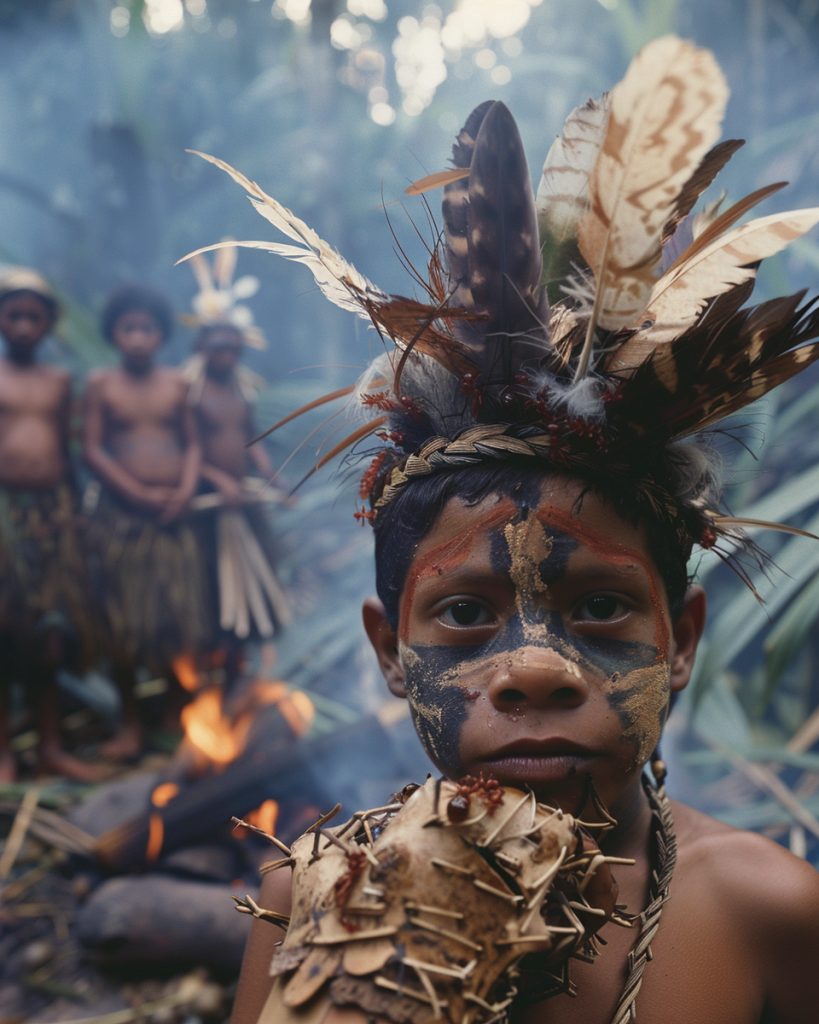In the depths of the Amazon rainforest, a remarkable coming-of-age ritual unfolds.
Young boys of the Sateré-Mawé tribe face an extraordinary test of courage and endurance.
They must slip their hands into gloves woven with hundreds of bullet ants, insects notorious for their excruciatingly painful sting.
The bullet ant glove ritual serves as a rite of passage, transforming boys into warriors through an ordeal that pushes the limits of human pain tolerance.
This unique tradition has captured the imagination of anthropologists and adventurers alike.
The bullet ant’s sting rates a four out of four on the Schmidt sting pain index, a scale measuring insect-inflicted agony.
Imagine the sensation of being shot – now multiply that across an entire hand.
Yet for the Sateré-Mawé, this excruciating experience is a crucial step in proving one’s worth and resilience.
The process begins with the collection of bullet ants from the forest.
These formidable insects are then woven into leaf gloves, their stingers facing inward.
As the young initiates don these gloves, they embark on a journey that will test their physical and mental fortitude.
The ritual raises intriguing questions about cultural identity, the nature of pain, and the lengths humans will go to prove themselves worthy of adulthood.
Cultural Significance of the Satere-Mawe Ritual
The Satere-Mawe bullet ant ritual serves as a profound rite of passage, deeply rooted in the tribe’s cultural fabric.
It intertwines notions of masculinity, endurance, and spiritual transformation.
Origins and Ethnographic Context
The Satere-Mawe people, an indigenous group in Brazil, have practiced this ritual for generations.
With a population of around 10,000, they inhabit the Amazon rainforest, a realm teeming with both danger and opportunity.
Their intimate connection with nature birthed this unique coming-of-age ceremony.
The ritual emerged from the tribe’s deep understanding of the bullet ant’s potent sting and its perceived spiritual properties.
In Satere-Mawe cosmology, enduring the ant’s venom is believed to cleanse the spirit and fortify the body.
This practice reflects their holistic worldview, where physical pain intertwines with spiritual growth.
Rite of Passage and Masculinity
The bullet ant glove ritual marks a boy’s transition into manhood.
It’s a crucible of pain, designed to test courage and resilience.
Participants must wear gloves filled with angry bullet ants for ten minutes, enduring stings 30 times more painful than a bee’s.
This ordeal isn’t a one-time event.
Boys must repeat it up to 20 times over several months or years. Each successful attempt earns respect and status within the community.
The ritual embodies the tribe’s ideals of masculinity: strength, stoicism, and sacrifice.
It prepares young men for the challenges of adulthood in the unforgiving Amazon.
Beyond physical toughness, it instills mental fortitude and communal bonds.
Ecology and Biology of the Bullet Ant
The bullet ant, notorious for its excruciating sting, inhabits a fascinating ecological niche. Its biology and habitat adaptations have intrigued scientists and indigenous peoples alike.
Paraponera Clavata’s Habitat
The bullet ant, scientifically known as Paraponera clavata, thrives in the lush rainforests of Central and South America.
These formidable insects construct their nests at the bases of trees, often choosing species with buttress roots that provide natural protection.
Researchers have observed an intriguing symbiotic relationship between bullet ants and certain plants.
The ants fiercely defend their territory, inadvertently protecting their host trees from herbivores. In return, the trees offer shelter and sustenance.
Bullet ants forage primarily on the forest floor and lower vegetation.
Their diet consists of small insects, nectar, and plant sap. This diverse menu reflects their adaptability and importance in the ecosystem’s food web.
The Sting and Its Effects on Humans
The bullet ant’s sting is legendary, earning it the top spot on the Schmidt Pain Index.
When the ant’s stinger penetrates human skin, it injects a potent neurotoxic peptide called poneratoxin.
This venom causes intense, wave-like pain that can last up to 24 hours. Victims often describe the sensation as akin to being shot, hence the ant’s common name.
The sting typically triggers:
- Severe localized pain
- Trembling
- Profuse sweating
- Nausea and vomiting

